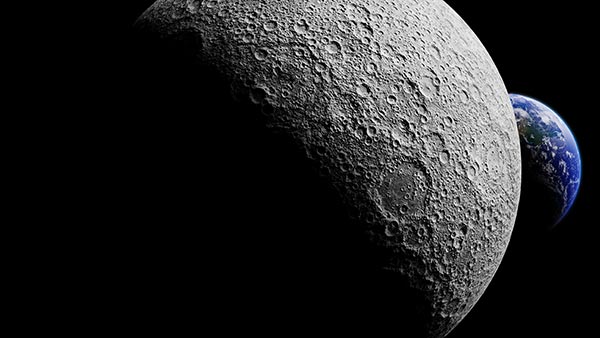
Advertisement
The Earth’s magnetosphere protects it from the powerful and dangerous solar radiation that constantly bombards it. According to a recent study, the Moon once had a powerful magnetosphere of its own, however it eventually weakened before eventually disappearing about one billion years ago.
The study was done by researchers from the Massachusetts Institute of Technology (MIT), the Berkeley Geochronology Center at the University of California, Berkley (UC Berkley) and the China University of Geosciences with support provided by the National Aeronautics and Space Administration (NASA). The researchers state that the Moon not only had its own magnetosphere, but that it was, for a time, actually twice as strong as the Earth’s. However, it petered out over time before totally disappearing somewhere between 1.5 to one billion years ago.
Dr. Benjamin Weiss, MIT professor of Earth, Atmospheric and Planetary Sciences and the study’s co-author, explained that the Moon’s magnetosphere was generated by two powerful dynamo effects within its core. The first of these would have generated a much stronger magnetic field around four billion years ago before being replaced by the second, much weaker but longer lasting dynamo around 2.5 billion years ago.
Searching for clues in moon rocks
To come find evidence of the Moon’s magnetosphere, the researchers first had to find the right moon rocks. The challenge here is that finding lunar rocks younger than three billion years old can be quite difficult, because volcanic activity on the Moon ended at about three billion years ago. Prior to this, volcanoes were much more common on the Moon. Eventually, the team identified two samples of rocks obtained by Apollo astronauts that were created by an impact one billion years ago.
With the rocks in hand, the researchers analyzed their electrons. Weiss calls these “little compasses” as these will either align in the direction of an existing magnetic field, or appear in random orientations when one isn’t present. Using this, the team confirmed that the rocks from one billion years ago were formed in an extremely weak magnetic field of little more than 0.1 microteslas (for comparison, the strength of Earth’s magnetic field at 0 latitude and 0 longitude is 31.869 microteslas). Following this, the rocks were subject to a radiometric dating technique adapted for the study by Weiss and UC Berkley’s David L. Shuster, to confirm their age.
Following this, and other tests to confirm the accuracy of their results, the researchers concluded that the dynamo powering the Moon’s magnetic field ended around one billion years ago.
How the Moon lost its magnetosphere
The study of the lunar dynamo and its demise is interesting to scientists because it bears similarities to the dynamo powering Earth’s own magnetosphere. The researchers theorize that crystallization was what caused the Moon’s initial, strong dynamo to weaken – as the inner core crystallized, the flow of electrically charged fluid in the core would have slowed down.
This crystallization was sped up by the Moon’s orbit moving farther from the Earth due to precession. Scientists theorize that the Moon orbited much closer to the Earth than it does today. This would have caused its mantle to wobble due to Earth’s gravity, stirring up activity in the core.
As the Moon moved farther from Earth, the effect of precession would have decreased, weakening the dynamo. By 2.5 billion years ago, crystallization would have become the dominant mechanism powering the lunar dynamo, resulting in a weaker magnetic field that lasted until the outer core’s final crystallization around a billion years ago.
How the Moon lost its magnetosphere could give scientists clues as to how the Earth maintains its own. This is an interesting question, as Earth’s nearest neighboring planets, Venus and Mars, have both also lost their own magnetospheres. Understanding the underlying causes behind these can not only help scientists understand why the Earth retained its magnetic field, it can also help in the search for possible life-bearing planets outside the solar system.
Sources include:
Advertisement
Advertisements
















